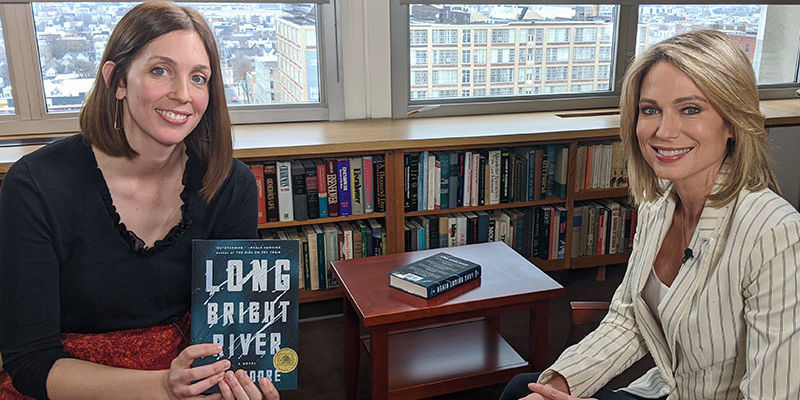Posted March 23, 2020
What to read for Women’s History Month
Amy L. Friedman, who teaches English and writing at Temple, recommends fiction by five essential writers.

Photography By:
Ryan S. Brandenberg
A student reading outside Charles Library.
To celebrate Women’s History Month, we asked Amy L. Friedman, associate professor of English and First Year Writing at Temple, to recommend novels and short stories that look at the world from a woman’s point of view.
As a scholar of satire, I gravitate toward funny, sardonic, sharp literary works by funny, sardonic, sharp women writers.
Often their work is packed with valuable insights we could still use, but is paradoxically largely under-read. I include them whenever I have the chance to teach a women’s lit course.
Sharpen your Women’s History Month reading list with these enduring satires.
- The Autobiography of Alice B. Toklas
Published in 1933, Gertrude Stein’s Autobiography of Alice B. Toklas is her most linear work of prose narrative, and paints a sharply focused, colorful mural of the painters and writers Gertrude and Alice socialized with in Paris between the wars.
- The Life and Death of Harriet Frean
May Sinclair’s 1922 novella, The Life and Death of Harriett Frean, is a surprisingly direct critique of the limitations placed on women’s lives, told in moving, imagistic, short scenes.
- The Secret Adversary
That same year, Agatha Christie—the creator of Hercule Poirot and Miss Marple—published The Secret Adversary, a fast-paced tale of international intrigue featuring a dashing male-and-female investigator couple, Tommy and Tuppence, who each provide the daring needed to unmask the criminal, and who were to feature in four more of Christie’s books. Christie’s work as a whole reflects then-current social concerns, and often sets an admirably brave heroine at the center.
- Poker!
Zora Neale Hurston, the author of Their Eyes Were Watching God, wrote a few quirky comic short plays, such as Poker!, written in 1931, in which she depicts scenes she encountered on her research excursions in the American South.
- “Big Blonde,” “The Mantle of Whistler” and “Dialogue at Three in the Morning”
The Roaring Twenties, flapper-era short stories of Dorothy Parker are always worth a visit, for their biting reveals of the unfair social conditions dealt to women. The Collected short stories include such Parker classics as “Big Blonde,” about a woman who is used and discarded by a series of men, “The Mantle of Whistler,” in which a young man and woman banter about love and romance, and “Dialogue at Three in the Morning,” in which a woman pours out her woes to a friend who barely gets a chance to speak.
—Amy L. Friedman


